SaaS Content Marketing: How stock images kill your B2B SaaS [examples]

Contents
Running a content marketing play can be the fastest and most long-term ways to grow your B2B SaaS. But for content to convert - you need to be authentic. Learn how to market your B2B SaaS the right way.
What is a stock image - "Hide the Pain Harold"
Stock photos are photographs that are licensed for commercial purposes. Commonly, marketers who need a visual way to improve their content pieces - will use stock images to add personality and excitement - without having to do a photoshoot of their own.
One of the most famous stock images in the world is of "Hide the Pain Harold" - a Hungarian retired electrical engineer and model, who's stock images became a world famous Internet meme.
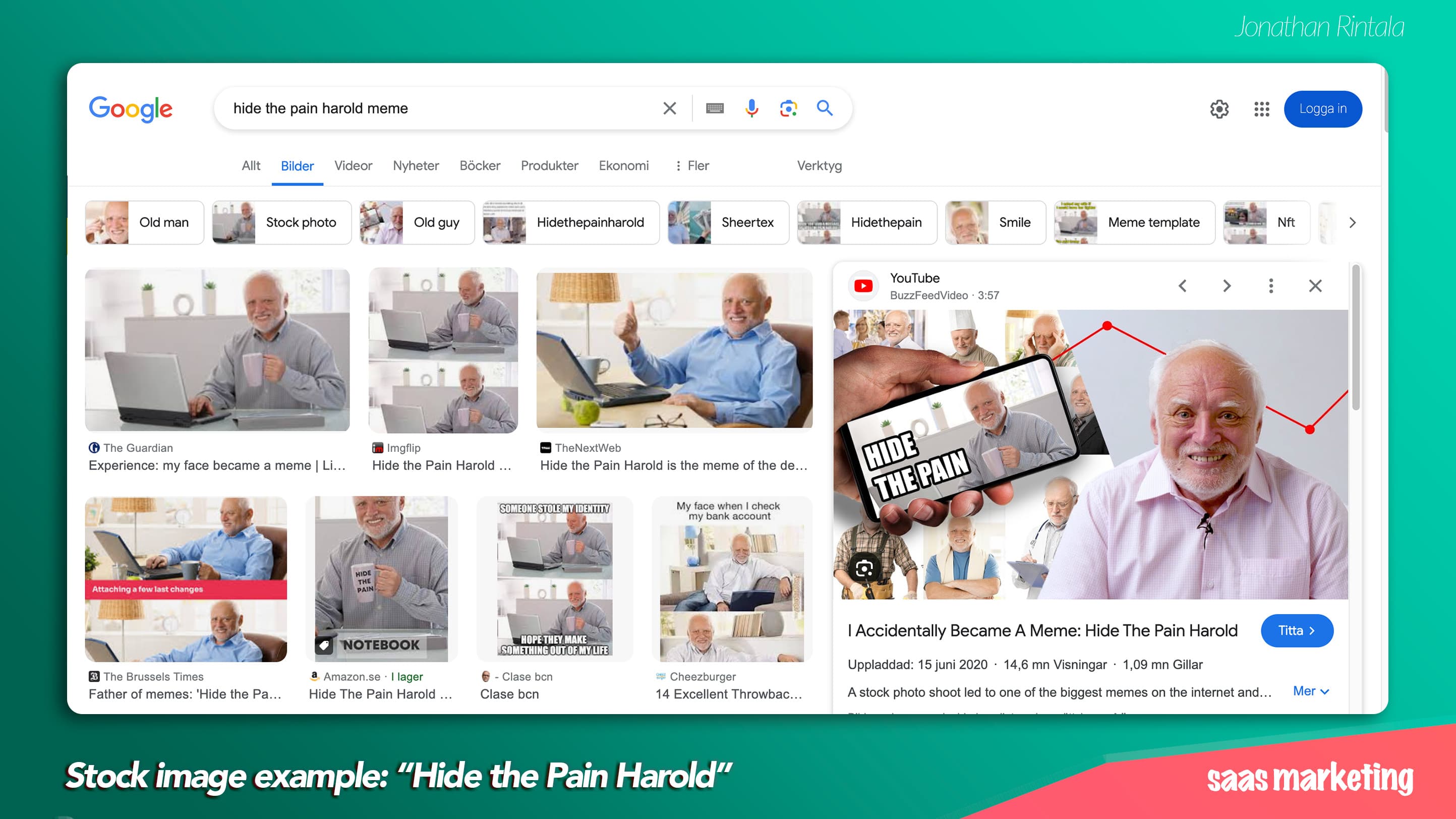
These stock images have not just been used in Internet memes, but also by marketers in content of thousands of companies. Many big brands, and even authorities, who had no idea who "Harold" was - and did not plan on getting associated with a meme.
The busy B2B SaaS marketer - hi, stock images!
Content marketers use stock images because it is fast and cheap.
Imagine you are a marketer at a fast growing B2B SaaS.
Your passionated CEO tells you - you need to 1. produce alot of content FAST, 2. you need to rank top 1 on the Google SERP, and 3. keep your social media fresh every week to crush the MQL goals for the month. You are solo in the marketing department with no budget for producing photos, paying models, etc. You got promised a marketing assistant when the next funding rund comes - but it seems like it's taking forever, while the sales team just keeps on growing..
Anyways, you have stayed up to date with the latest news - and have read the mishap about how the Swedish health authority mistakenly used the stock image meme "Hide the pain Harold" in marketing - as the face of their Covid-19 booking website.
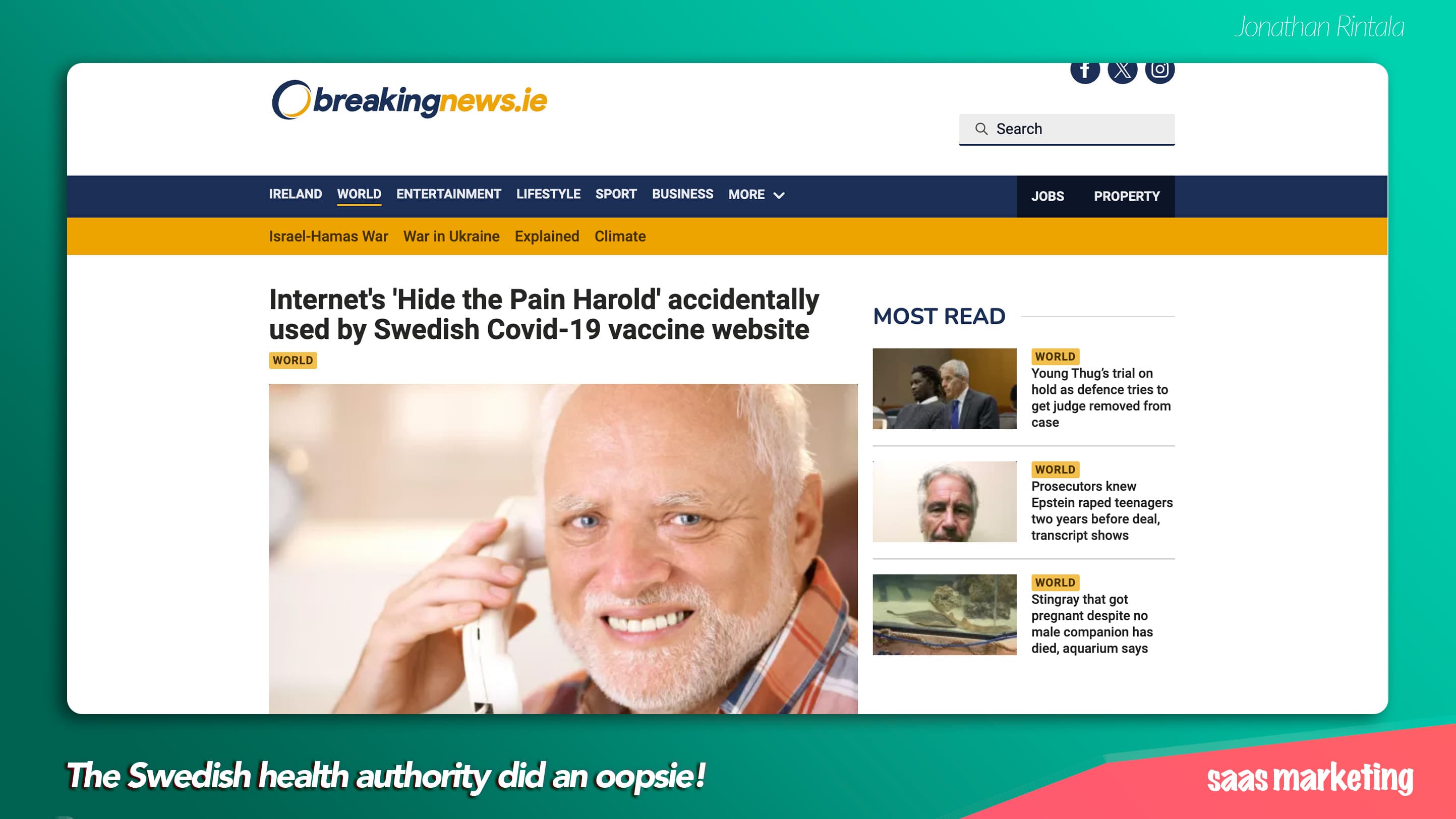
So, despite needing a happy face for your content piece - it would not just feel right to use Harold - it seems, abit.. generic?
You have heard of sites like Shutterstock, Unsplash, or Pixabay that offer free stock images. You are also on a budget. So, you Google "unsplash + happy office". And what appears as some decent results appear right away - rescue is here!
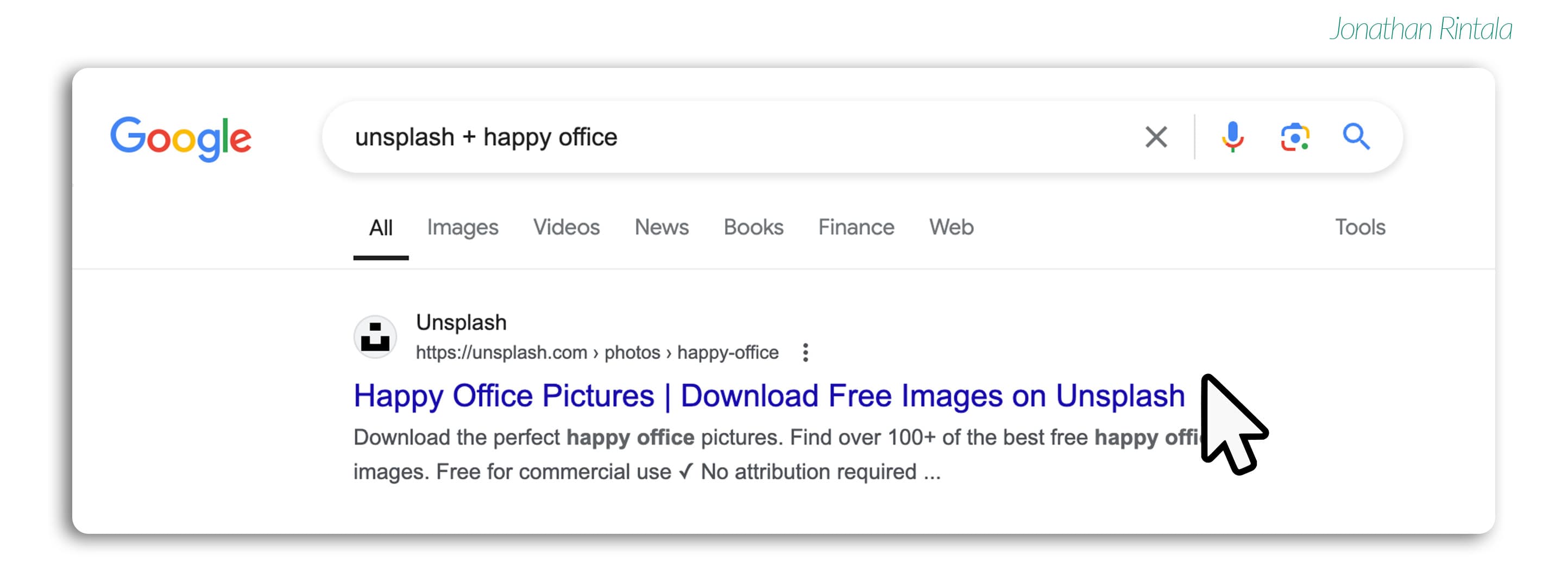
Time is tight to deadline and you need to get this post out asap, so you don't have time to scroll down further than the first page.. You find what seems like the perfect images to spice up the blog post. What can go wrong!
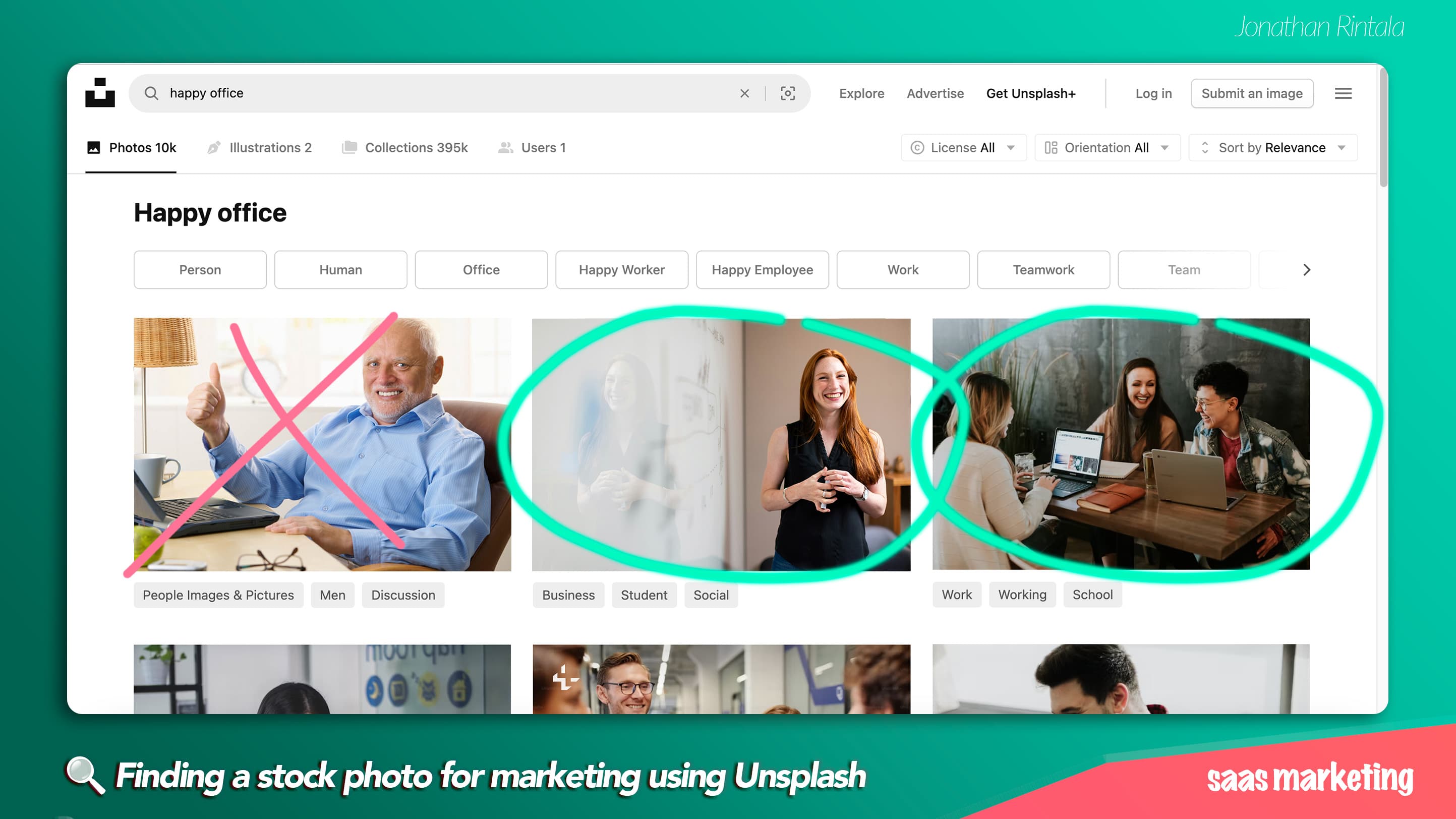
Sorry, Harold.. Not this time around!
It turns out - Harold is not alone
Well, it turns out - not choosing Harold was a good decision.
BUT, a lot of other clever marketers out there had the exact same idea around choosing alternative photos - being in lack of time and quickly needing a photo for their website, blog, or social media.
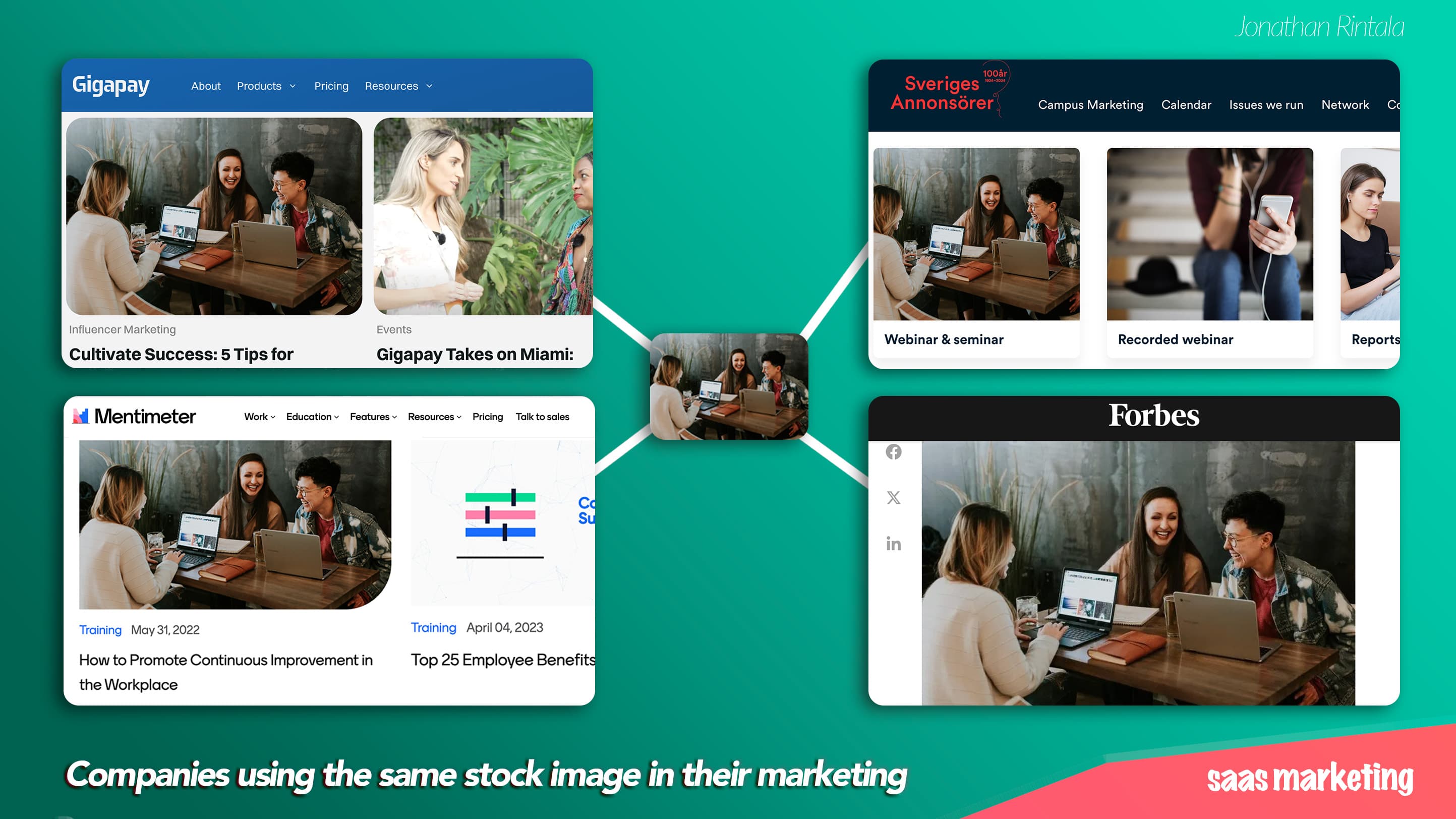
Entering the same Google search, finding the exact same top results and being in a rush - taking the top results without modifications straight into their content. All forgetting to ask one important question - who else is using this image? What will our leads think if they recognize it?
Maybe the reverse Google search would have been a better idea..
What does this mean for you?
Why not use a stock image for B2B SaaS
B2B SaaS is about trust - so don't waste all the valuable content you have produced on some lazily put together stock image.
Generic content will negatively affect your B2B SaaS brand, content, and conversions. It will associate you with wrong things, or even bad brands. It will not feel authentic - even though the lead might not be able to place it right away - they will get a subconscious feeling that something is off.
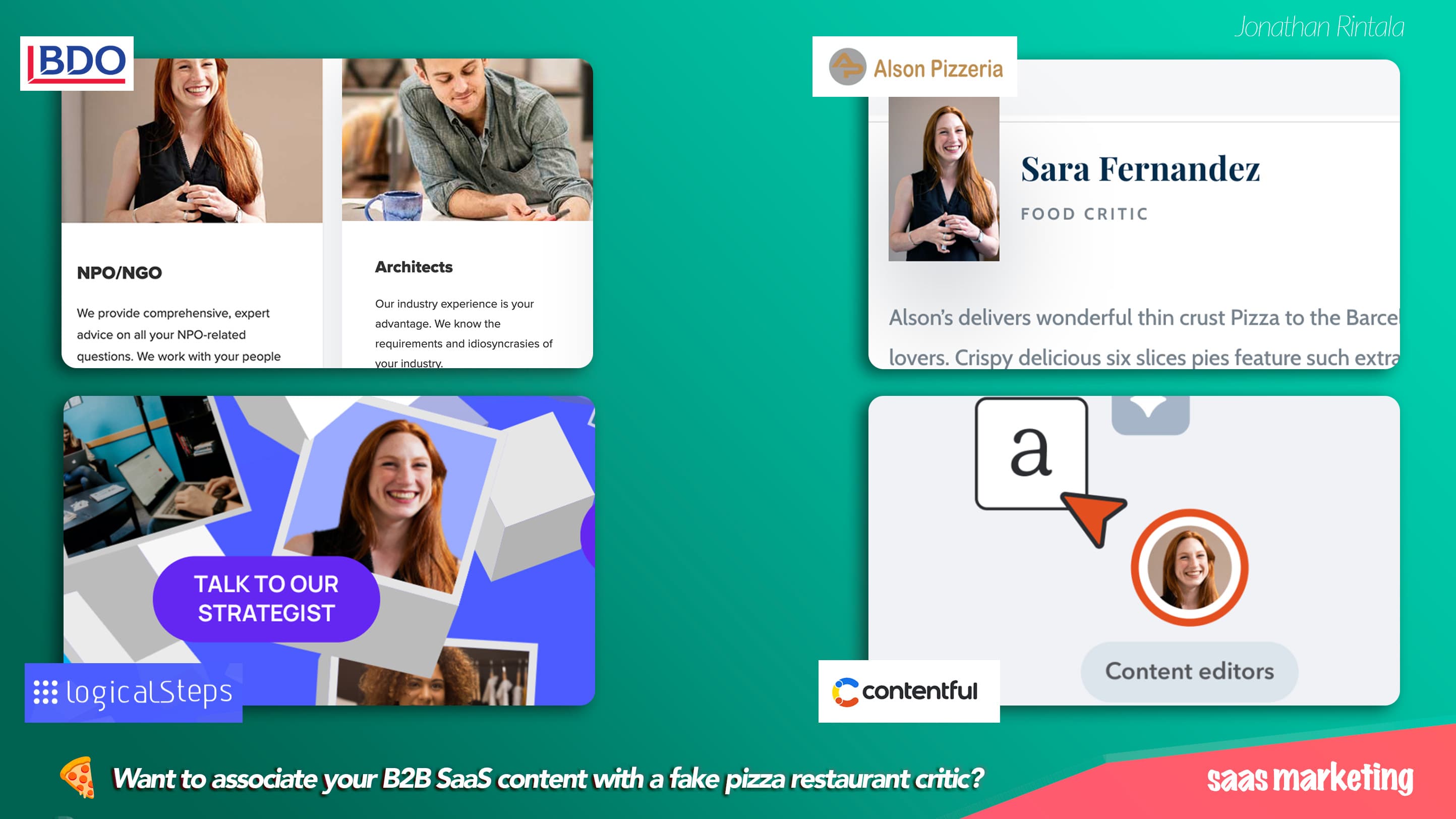
Some examples of B2B SaaS companies and others using stock images in marketing
Some bad examples of B2B SaaS content marketing
If it makes you feel better, big companies do this to.
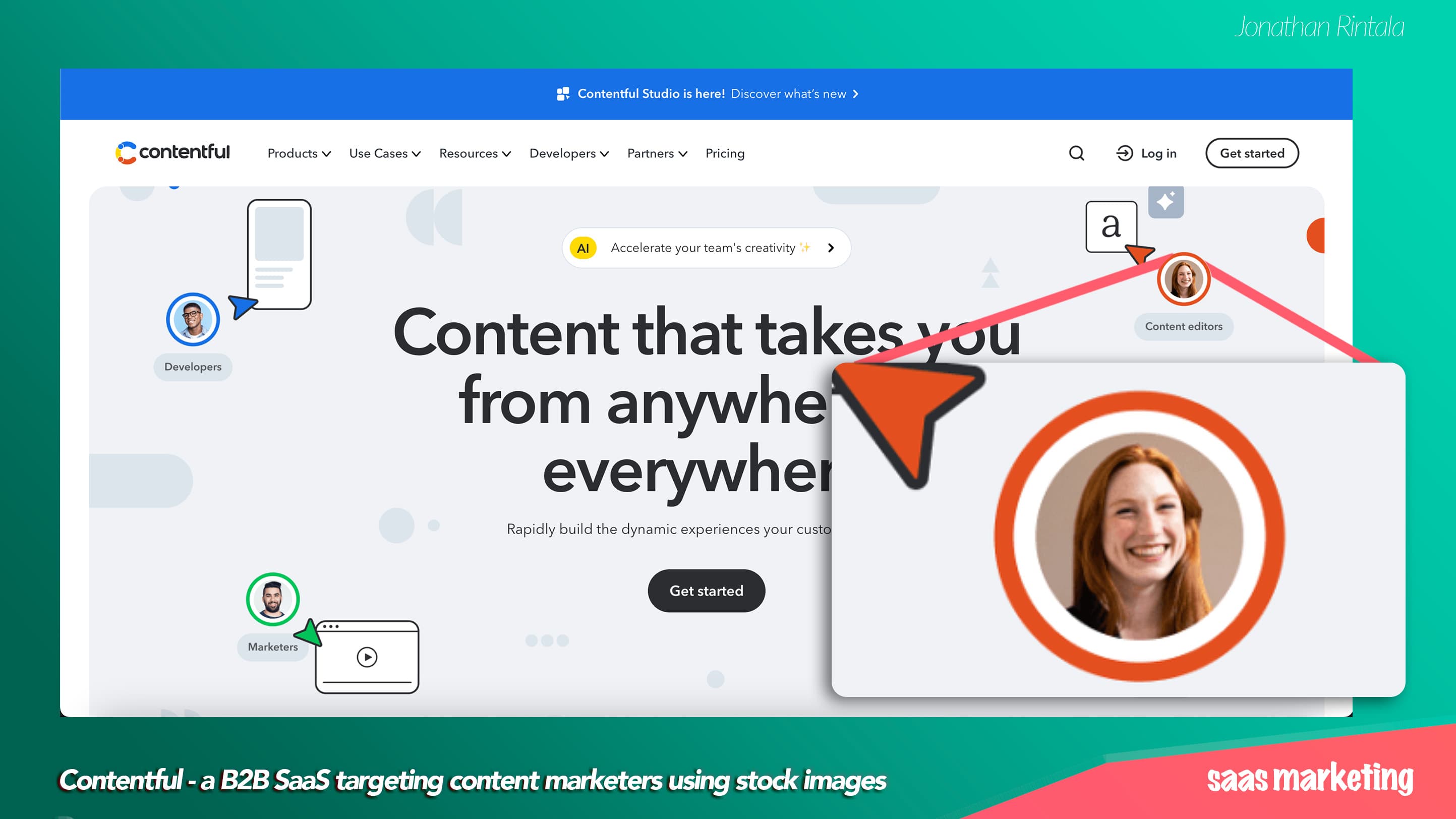
But, do you think Contentful, as a fast growing B2B SaaS rocket that have built a CMS for marketers and developers, want to associate themselves with a fake pizza review of a restaurant in Barcelona?
Well, that's what happens when they choose stock images.
I love Contentful - and use it for as CMS for all my content myself.
Therefore, it's quite surprising to see they put generic stock images (literally from the first page of Unsplash) up front on their first page - and don't value their brand higher. Especially, as they target marketers wanting to produce better content using their CMS.
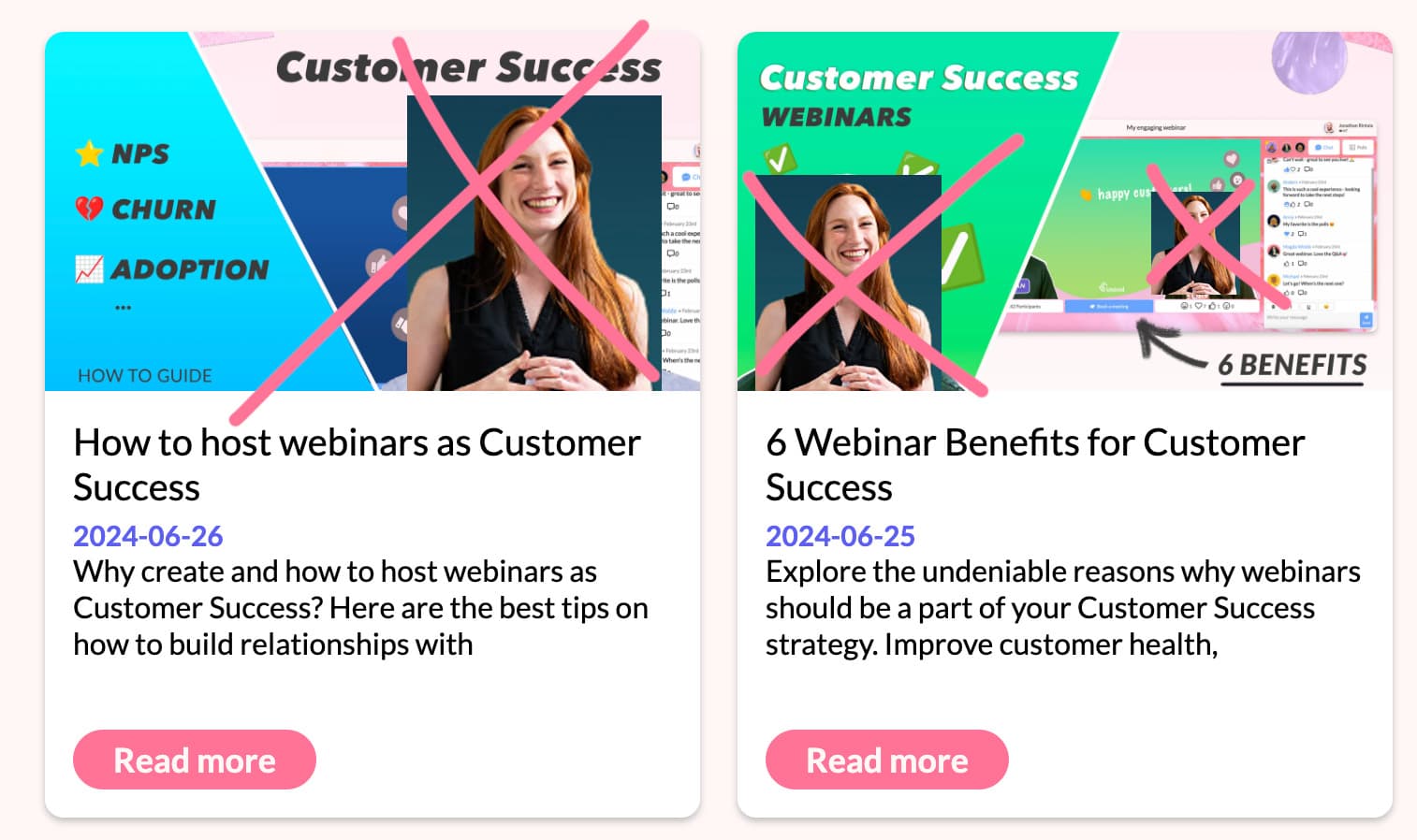
Example of how to NOT do content marketing - with stock images
Some good examples of B2B SaaS content marketing
A good example of how to run content the right way - is using own images and photos - preferably ones of your own team. This builds a strong bond to your brand's content and sense of familiarity.
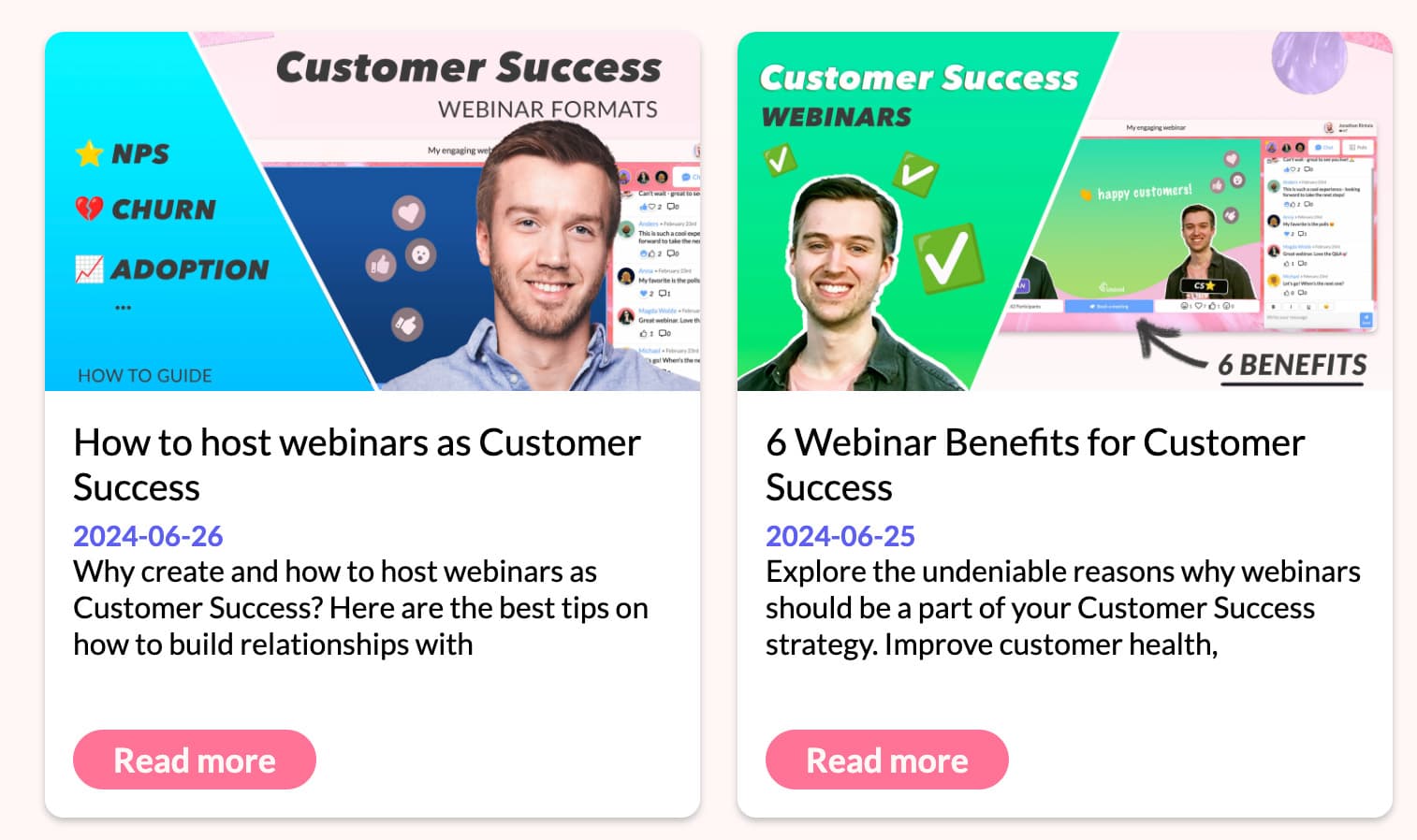
Example of how to do content marketing - without stock images [univid.io]
Lower the bar for the quality of the images if you feel that is something stopping you. The images can be taken with your iPhone and some good lighting. Build a image bank over time - it's OK to re-use them - but you will see a huge shift in perceived content quality and authenticity when you start using non-stock images. Also, putting a touch of your own graphical profile into the graphics will make your content feel consistent and professional.
HubSpot is a good example how to run content marketing as B2B SaaS with custom graphics that build brand and uniformity.
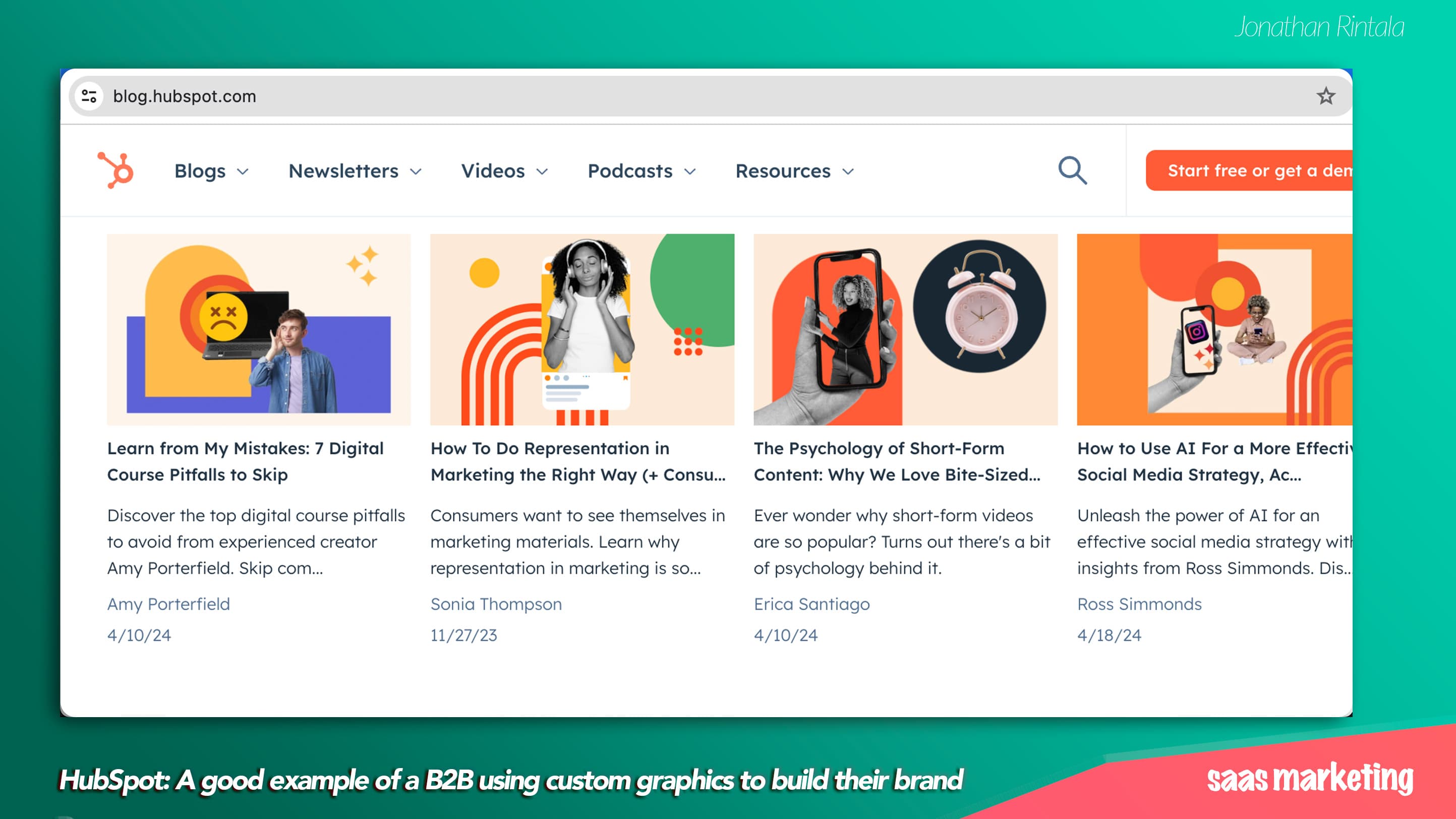
By doing this they make their leads and users recognize their brand, and feel that their content (and company) is authentic.
A lot of successful scale-ups and SaaS hire a content producer internally early on - who can produce photos, videos, etc. So, that can be a good next step to aim for.
Conclusion
Trust is key to creating content marketing funnels that convert for B2B SaaS. Thus, use stock images with care in your content marketing efforts. If you need to use them - modify them and only use parts of them. Try to avoid stock image faces at all times and use as much of your own images. By replacing stock images by images of you and the team - you will you will make customers feel a genuine connection to you. Establish your B2B SaaS as an authentic brand - instead of associated with generic content (and even bad brands in the wrong niche).
Want to learn more about growing SaaS companies?

